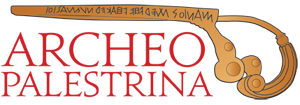Visualizza a schermo intero The old town-center of Palestrina is built on ancient roman terraces and developed around parallel east-west axes. The lowest terrace corresponds to the modern via degli Arcioni, the one on top to the modern via Barberini where the National Archaeological Museum is located. From via degli Arcioni one can enter corso Pierluigi, the main axis and …
Read More »archaeological tour
Via del Sole: a view at the lower city
Visualizza a schermo intero Via del Sole (Sun street, named after its exposure on a terrace facing the south and because of its connection to the Sungate on the East-side) dates back to the 2nd half of the II century B.C.; it is part of the monumental complex named “Propylaeum”. The original height of the street was slightly greater; the …
Read More »Via degli Arcioni: the monumentalization of higher city
Visualizza a schermo intero Via degli Arcioni (Arcioni street) takes name from the big arches (arcioni), a series of vaulted spaces with arched front, that used to hold the upper terrace and artificially support the ancient via del Sole. The construction is a part of a very composite monumental front that stands on a massive wall made in Opus Quadratum, …
Read More »The Sun Gate and the fortifications
Visualizza a schermo intero Porta del Sole (Sun Gate) was created in 1642 by Taddeo Barberini, replacing the previous Porta San Giacomo (St. James Gate). Porta del Sole was named after the family coat of arms visible on the architrave, as well as from its location on the eastern side of the wall. Today, like in the past, it represents …
Read More »The old city walls of Praeneste
Visualizza a schermo intero The medieval church dedicated to St. Mary of the Angels, which overlooked the square named after it, was bombed and destroyed, as the most part of the town-center, by the American attack during the Second World War. Going downhill towards Porta del Sole (The Sun Gate), on the right, portions of the defensive walls of the …
Read More »Buildings in the forum square
Visualizza a schermo intero Three buildings dating from the late 2nd century B.C. overlooked the Forum square: the Basilica, the so-called “Antro delle Sorti” (sacred cave of the lots) and the Aula Absidata (Apsidal Hall). The Basilica, today a large uncovered courtyard, was the place where trials and any other legal matters were held. Originally it was divided into three …
Read More »The Forum of Praeneste and the temple beneath the Cathedral
Visualizza a schermo intero The area of piazza Regina Margherita corresponds to the forum, the administrative and religious heart of the ancient city. The cathedral -dedicated to the martyr Agapitus- lies on temple structures, probably dedicated to Jupiter Emperor, dating from the late 4th century B.C.; the excavations on the eastern side of the church, undertaken in the beginning of …
Read More »Via Thomas Mann
Visualizza a schermo intero The street is dedicated to the famous German novelist born in Lubecca in 1875 and author of masterpieces like Death in Venice and The Magic Mountain. During summer of 1896 he moved to Palestrina with his brother, Heinrich Mann, novelist himself too and strong opponent of the Nazi Regime, and famous for his book Professor Unrat …
Read More »The Sanctuary of Fortuna Primigenia
Visualizza a schermo intero The National Archaeological Museum of Palestrina is located in the Palazzo Colonna-Barberini, built in the 15th century on the surviving structures of the old Temple of Fortuna Primigenia, which dates from the end of the 2nd century B.C. The monumental complex is structured in a series of terraces carving out the slope of Monte Ginestro. An …
Read More »The old ghetto and the hellenistic fountains
Visualizza a schermo intero In Renaissance period, the neighbourhood around modern via del Borgo was known as “lo spregiato” (the scornful), and in the Middle Ages it was the city ghetto. In the archaeological area, today protected by fences, there was a Synagogue, later transformed into a hospital, just after the expulsion of the Jews from Palestrina at the time …
Read More » Archeopalestrina Percorso archeologico di Palestrina, l'antica Praeneste
Archeopalestrina Percorso archeologico di Palestrina, l'antica Praeneste